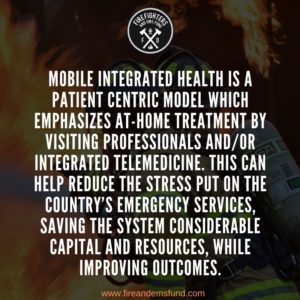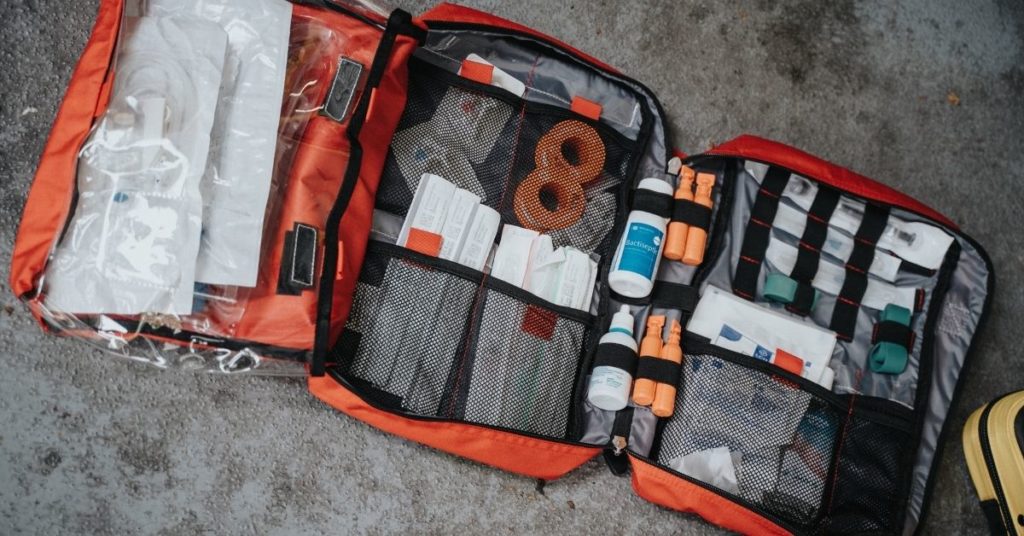Emergency service providers grapple with high volume 9-1-1 calls that don’t always constitute an emergency medical situation. With limited time and resources, unnecessary calls can drain and undermine efficiency in the system.
Valuable time and resources can often get tied up in a small group of individuals with chronic issues. These are referred to as “super-utilizers,” and an emerging trend in public health may soon provide a solution to their needs and the needs of the community at large without relying solely on 9-1-1 emergency visits.
Mobile Integrated Health, or MIH, is a patient centric model being deployed around the country which emphasizes at-home treatment by visiting professionals and/or integrated telemedicine. This system utilizes paramedics with specialized training to perform at-home care, such as health screenings, treatments, and follow-ups on a variety of issues, including substance abuse, mental health, and chronic illness.
Many communities who have already adopted MIH practices have witnessed its positive impact firsthand. Take the issue of “super-utilizers,” for instance. Telemedicine platform developer, Julota, presents the case of Fort Worth, Texas:
“A 2009 MedStar study found that in the Fort Worth, Texas area, 21 patients had been transported to local EDs a total of 800 times over a 12-month period, generating over $950,000 in ambulance charges and even more significant ED expenses. Most of these individuals did not have health insurance and relied on EMS and local EDs for health services…”
But over a two-year period, telemedicine cut the volume of 9-1-1 calls in the area drastically, saving the system millions:
“Between July 2009 and August 2011, the Texan community saw the volume of 911 calls fall by 58 percent, from an average of 342.3 monthly calls during the 6-month period before enrollment to 143.3 monthly calls afterward.”

Julota also points out that MIH can have an extended impact beyond immediate medical treatment, especially for communities that are traditionally underserved medically:
“In a California study of MIH-CP in over five counties, patient self-assessments after receiving community paramedic visits showed several improvements: a 16% increase in their rating of overall health, 11% in their understanding of discharge instructions, 4% in their understanding of when to take medications, and 9.5% in their understanding of medication side effects.”
This can also positively impact the rate of hospital readmissions, as evidenced by data from various counties in California, such as Glendale and San Bernadino, who saw rehospitalization for chronic patients decrease by about 10%.
These results are testaments to the utility of Mobile Integrated Health and the benefit it can provide to both urban and rural areas alike. Now, states are beginning to make it more mainstream through grants and legislation. One such state, Indiana, has established an EMS commission used to create legislative and practical frameworks for implementing the method in its communities. One key to evolving this tool into mainstream use is authorizing payor reimbursement for MIH services. For fiscal year 2022, the state of Indiana has provided $100 in grants for EMS providers located in six different counties who provide MIH services.
Ultimately, the Mobile Integrated Health system will provide a variety of benefits to both patients and caregivers as it gets broader implementation into healthcare. It will help increase access to routine medical services, reduce anxieties of patients suffering from chronic conditions, and provide medical professionals more flexibility in treating patients. In addition to also expanding healthcare options to the underserved, it will help reduce the stress put on the country’s emergency services, saving the system considerable capital and resources, while improving outcomes. The Covid-19 pandemic accelerated the adoption of telemedicine and alternative services, making MIH more attractive and likely the future of healthcare.








